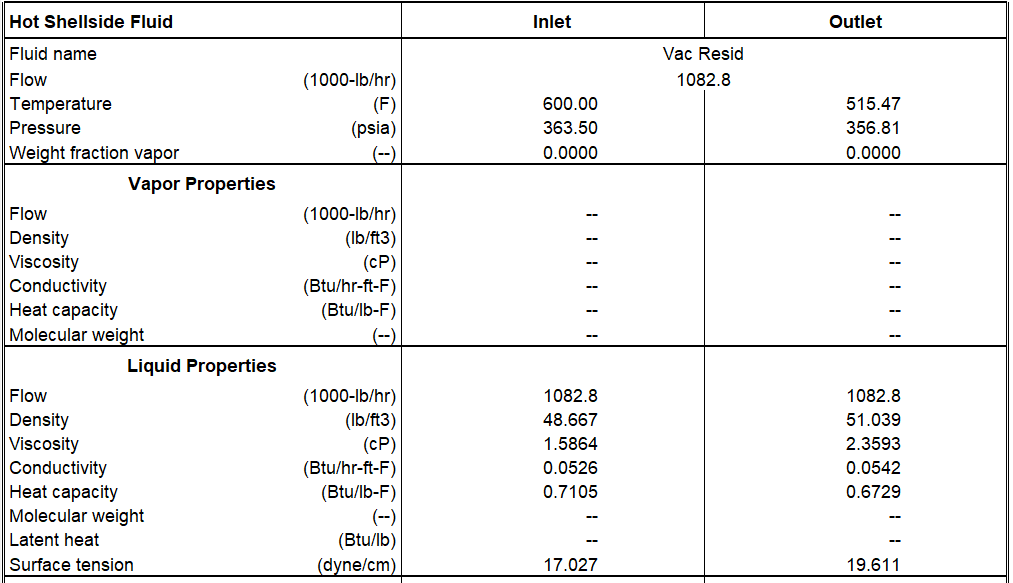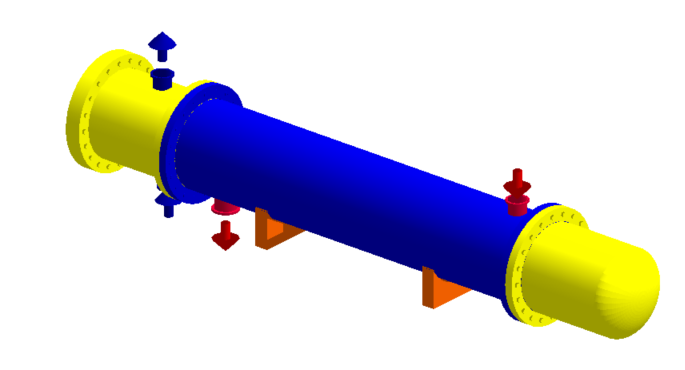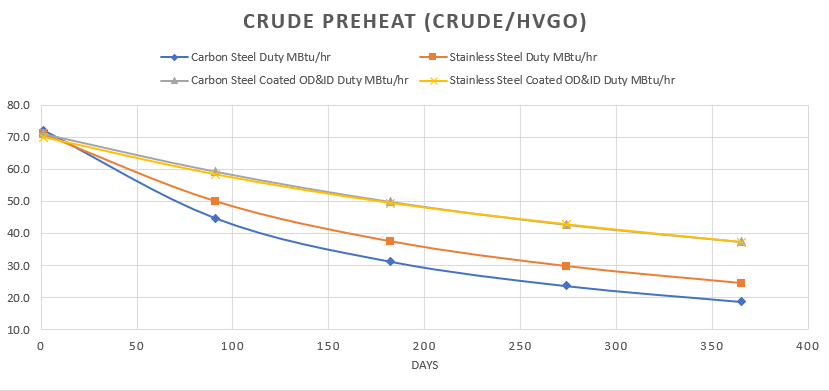Objectives
Repeat of Study 1, but it assumes anti-fouling coating on both tube OD & ID.
This study evaluates a Crude preheat exchanger service heat transfer performance with the following tube material and coatings and estimates the energy savings and CO2 Emissions Reduction:
- Carbon Steel
- Stainless Steel
- Carbon Steel Tube ID & OD Coated
- Stainless Steel Tube ID & OD Coated
Assumptions
- Service – Desalted Crude vs Resid
- Tube ID Coating Thickness – 25 Microns (0.001 inch)
- Tube OD Coating Thickness – 25 Microns (0.001 inch)
- Coating Thermal Conductivity – 0.722 Btu/hr-ft-F
- Fuel Value -$3.50 per MBtu/hr
[Note fuel prices in Asia can be 3X compared to US] - Furnace Efficiency = 0.9
- Network Factor = 0.85
[Part of the Duty Gain in the Exchanger Diminishes Heat Transfer on other Exchangers in the Preheat Train due to changes in temperature differentials] - CO2 Reduction based on EPA Conversion Equations
- Heat Transfer Calculation performed with HTRI XIST
- Assumed Fouling Factor shown in the Comparison Tables below
- All bundles are cleaned yearly
- Assumed Inlet Operating
- Crude Inlet Temp – 400 F
- Crude Rate – 1800 klb/hr
- Resid Inlet Temp – 600 F
- Resid Rate – 1,082 klb/hr

Heat Exchanger Geometry
- TEMA – AES
- Shell Id = 54”
- 1130 Tubes
- 1” Tube OD
- 0.083” tube wall thickness
- 2 Tube Passes
- 20 ft length
- 11 Baffle Cross Passes, Single Vert Seg , 18.8% Cut

Results
Comparison Tables


Economic & CO2 Reduction Benefit
Coated Versus Carbon Steel
- Annualized Duty Reduction = 14 MBtu/hr
- Energy benefit = $405k a year
- CO2 Equivalent Benefit = 6,131 Tons over 2 years
Coated Versus Stainless Steel
- Annualized Duty Reduction = 9 MBtu/hr
- Energy benefit = $260k a year
- CO2 Equivalent Increase Emissions = 3,937 Tons a year
Note if the Crude preheat furnace is limited and/or the Preheat Train is Hydraulically limited, the margin benefits could be significantly more than the credits listed above.
